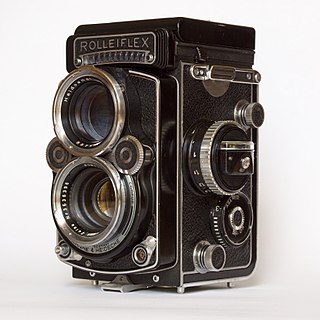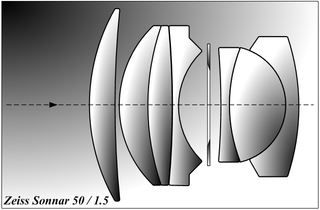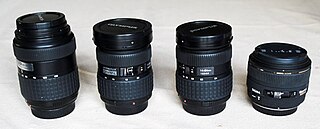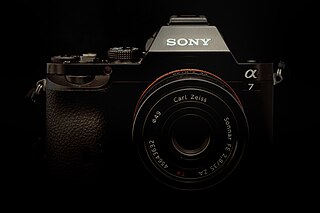| Maker | Zeiss |
|---|---|
| Lens mount(s) | Sony E-mount |
| Technical data | |
| Type | Prime |
| Focus drive | Linear motor |
| Focal length | 135mm |
| Image format | 35mm full-frame |
| Aperture (max/min) | f/2.8 - f/22.0 |
| Close focus distance | 0.87 metres (2.9 ft) |
| Max. magnification | 0.19x |
| Diaphragm blades | 9 |
| Construction | 14 elements in 11 groups |
| Features | |
| Manual focus override | |
| Weather-sealing | |
| Lens-based stabilization | |
| Aperture ring | |
| Unique features | Digital focus distance scale, 8 anomalous partial dispersion glass elements |
| Application | Portrait |
| Physical | |
| Max. length | 120 millimetres (4.7 in) |
| Diameter | 81 millimetres (3.2 in) |
| Weight | 614 grams (1.354 lb) |
| History | |
| Introduction | 2017 |
| Retail info | |
| MSRP | $1999 USD |
The Zeiss Batis Sonnar T* 2.8/135mm is a full-frame (FE) wide-angle prime lens for the Sony E-mount, announced by Zeiss on April 24, 2017. [1]
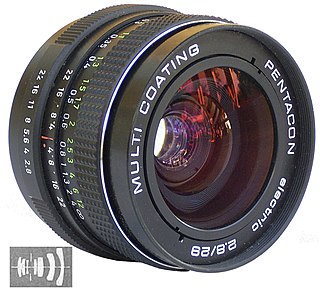
In film and photography, a prime lens is a fixed focal length photographic lens, typically with a maximum aperture from f2.8 to f1.2. The term can also mean the primary lens in a combination lens system. Confusion between these two meanings can occur if context doesn't make the interpretation clear. People sometimes use alternate terms—primary focal length, fixed focal length, or FFL to avoid ambiguity.

The E-mount is a lens mount designed by Sony for their NEX and ILCE series of camcorders and mirrorless cameras. The E-mount supplements Sony's A-mount, allowing the company to develop more compact imaging devices while maintaining compatibility with 35mm sensors. E-mount achieves this by:

Carl Zeiss , branded as ZEISS, is a German manufacturer of optical systems, and industrial measurement and medical devices, founded in Jena, Germany in 1846 by optician Carl Zeiss. Together with Ernst Abbe and Otto Schott they built a base for modern optics and manufacturing. There are currently two parts of the company, Carl Zeiss AG located in Oberkochen with important subsidiaries in Aalen, Göttingen and Munich, and Carl Zeiss GmbH located in Jena.
Contents
Though designed for Sony's full frame E-mount cameras, the lens can be used on Sony's APS-C E-mount camera bodies, with an equivalent full-frame field-of-view of 202.5mm.
In cinematography, full frame refers to the use of the full film gate at maximum width and height for 35 mm film cameras. It is sometimes also referred to as silent aperture, full gate, or a number of other similar word combinations. It is the original gate size pioneered by William Dickson and Thomas Edison in 1892 and first used in the short film Blacksmithing Scene. Full frame is generally used by all 4-perf films, whether silent, standard 35, or Super 35. The introduction of Academy ratio in 1932 required that the lens mount needed to be shifted slightly horizontally to re-center the lens at the new center of frame; however, the gate size did not change as the extra negative information would be cropped out by lab processes in post-production. 4-perf Super 35 is nearly identical to the original full frame standard, although the lens mount requires vertical re-centering when common topline extraction is used. Hard mattes for all common ratios exist and either replace the film gate itself or are inserted within it. However, these are usually not used in the event that any reframing needs to be done.

Advanced Photo System type-C (APS-C) is an image sensor format approximately equivalent in size to the Advanced Photo System film negative in its C ("Classic") format, of 25.1×16.7 mm, an aspect ratio of 3:2.

